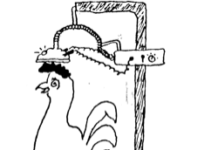By John Schlageck, Kansas Farm Bureau
Every year in preparation for Memorial Day, Wilma Jean Erbe visits the three cemeteries where her relatives are buried. She goes to spruce up the grounds and place flowers on the graves.
What’s different about Mrs. Erbe’s annual pilgrimage is she makes the rounds to Harrison, Cherryvale and Altoona the first or second weekend in May. Mrs. Erbe makes certain the grass surrounding each tombstone is clipped and groomed. Even the foundation is brushed clean and any weeds that may have sprung up since last year are pulled by hand.
I met the 94-year-old Montgomery County lady May 2. Her daughter, Aprile, the German spelling, was chauffeuring her mother 61 miles round trip to manicure the three cemeteries. The back seat and floorboardof Aprile’s car was filled with buckets of flowers, clippers and other tools for their task.
As we walked to the tombstone bearing her husband’s name, Alfred Ernst Erbe, also clearly etched in the granite was Mrs. Erbe’s name and birthdate on the left side of the grave marker. Wilma Jean (Estes) was born April 30, 1921. God willing, she’ll live to be 100 years old.
“People can’t believe I’m as old as I am,” Mrs. Erbe says. “I’m the eldest member of my church in Neodesha and I’m still going strong.”
On May 30, 1868, soldiers who died in the Civil War were honored for the first time on Decoration Day. Mourners honored the Civil War dead by decorating their graves with flowers.
By the late 19th Century, many communities across the country had begun to celebrate Memorial Day and after World War I, observers began to honor the dead of all America’s wars.
In 1971, Congress declared Memorial Day a national holiday to be celebrated the last Monday in May.
As a farm girl, Mrs. Erbe grew up milking cows. Every year on “Decoration Day,” her dad would load the family in the wagon and travel to the Harrison chapel and cemetery located in the country approximately 15 miles northeast of Neodesha.
When they arrived at the cemetery, the children were lined up next to one of their relative’s tombstones and Mrs. Erbe’s father would tell them a story about the grandmother, uncle or cousin buried below.
“It’s how we learned about our family,” Mrs. Erbe says. “It was a way of connecting with our heritage. After my dad finished his story, we felt like we knew our kin buried there.”
Yes, Mrs. Erbe plans to bring flowers to honor her family members and those buried in the cemeteries as long as she’s able. She understands when visiting these places, it is possible to be overcome with a sense of yearning. It is also possible to feel something larger, a sense of finality and rest – a sense of peace.
The family members – soldiers from World War I, World War II, the Korean conflict, Vietnam, Desert Storm, Afghanistan and other conflicts – are at rest in these cemeteries. They live on in the memory of their families and friends and in a larger sense in the memory and gratitude of the nation they died for.
On May 25, whether you refer to it as Decoration Day or Memorial Day, remember those who paid the ultimate price so we could live in peace. Say a prayer for these fallen heroes.
John Schlageck is a leading commentator on agriculture and rural Kansas. Born and raised on a diversified farm in northwestern Kansas, his writing reflects a lifetime of experience, knowledge and passion.
– See more at: http://www.kfb.org/news/insight/index.html#sthash.Ey6inJzf.dpuf




